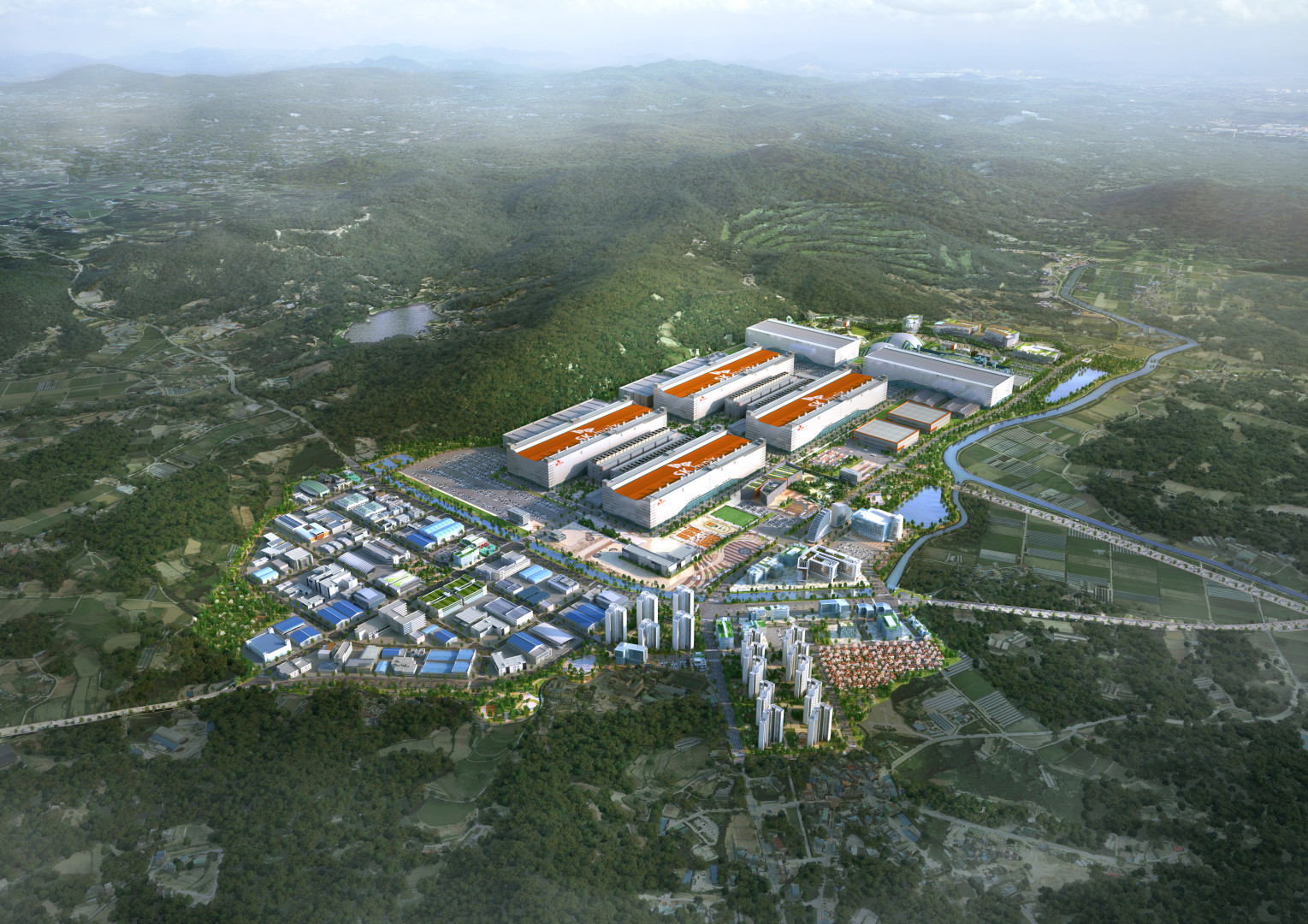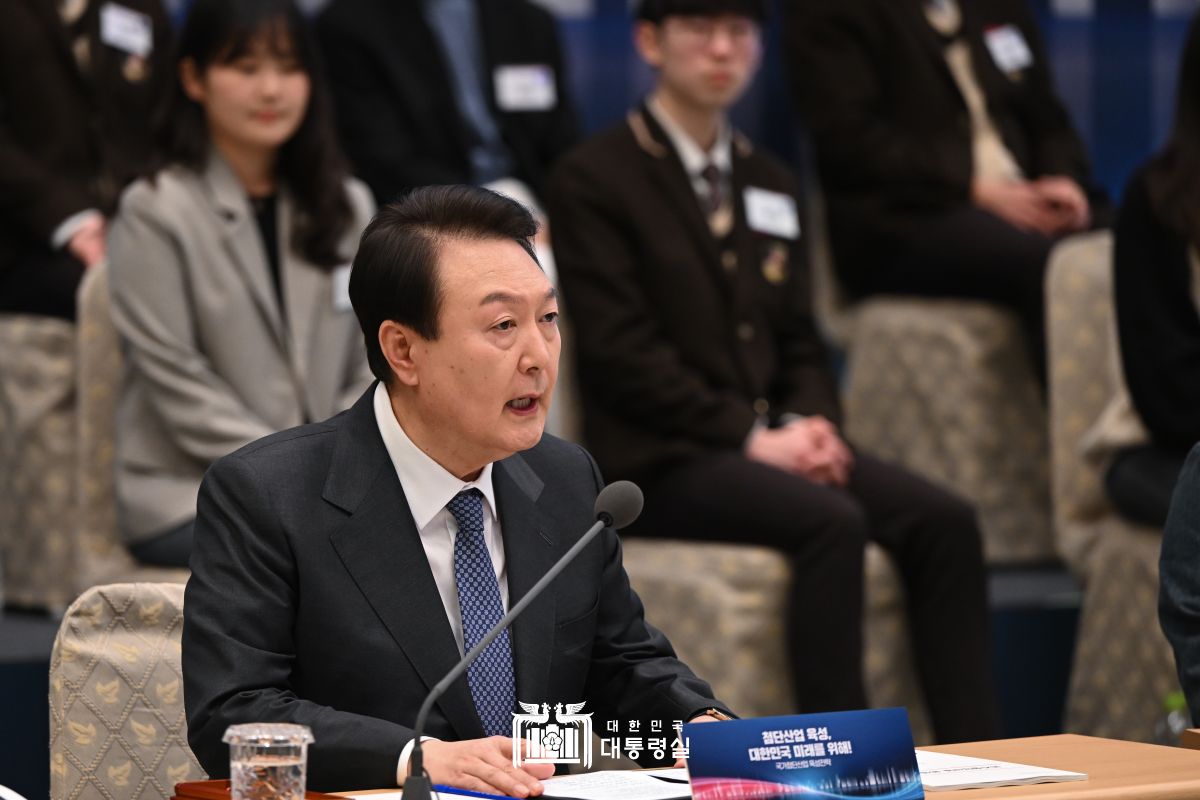수도권 반도체 메모리 제조단지에 150개 이상의 국내외 소부장 기업과 판교 팹리스 기업들을 연계해 세계 최대 규모의 반도체 메가 클러스터가 구축될 것으로 전망된다.
용인시, 시스템반도체 국가산단 후보지로 선정
수도권 파운드리-메모리-팹리스-소부장 클러스터
2042년까지 300조원 규모의 신규 민간 투자

▲SK하이닉스와 50여개 소재·부품·장비 기업이 입주할 예정인
처인구 원삼면 일대 126만평 규모의 용인반도체클러스터 조감도. 이번 시스템반도체 분야 국가산단은 원삼면 일대 부지에서 멀지 않은 용인시 처인구 남사읍에 710만㎡(약 215만평) 부지가 후보지로 선정됐다.(이미지:용인시청)
수도권 반도체 메모리 제조단지에 150개 이상의 국내외 소부장 기업과 판교 팹리스 기업들을 연계해 세계 최대 규모의 반도체 메가 클러스터가 구축될 것으로 전망된다.
윤석열 대통령이 15일 오전 영빈관에서 ‘제14차 비상경제·민생회의’를 주재했다. 이날 회의에서 300조원에 달하는 대규모 신규 민간 투자를 바탕으로 수도권에 세계 최대 규모의 신규 ‘첨단 시스템반도체 클러스터’를 구축하겠다고 밝혔다.
국가첨단산업 육성 전략에서 시스템반도체 분야에 대규모 민간 신규투자가 투입되는 이번 메가 클러스터는 경기도 용인시가 국가산단 후보지로 선정됐다. 2042년까지 300조원 규모의 투자금이 투입될 예정으로 첨단 반도체 파운드리 5개 구축과 소부장 및 팹리스 기업 등 최대 150개 반도체 기업을 유치할 계획이라고 발표했다.
단일 단지 기준 세계 최대 규모를 자랑하는 신규 클러스터는 △기흥 △화성 △평택 △용인의 기존 메모리 생산단지와 연계해 파운드리-메모리-팹리스-소부장이 하나의 권역으로 연계된 집적 클러스터로서 기능할 것으로 전망된다.
차세대 기술을 선도해야 하는 만큼 우수 인재 확보와 기반 기술 등의 확보가 무엇보다 중요하다. 이에 정부는 전력, 차량, AI 등 차세대 반도체 대규모 핵심기술 개발에 3조2,000억원을 지원하고 대기업-팹리스간 구매조건부 수요연계 프로젝트 지원에 50~80억원을 투입할 것으로 전했다.
현장형 인재 및 석·박사급 인재, 지역인재 등 반도체 인재를 2031년까지 15만명 양성하는 것으로 목표하고 있으며, 설비투자 세액공제 확대 및 인프라 지원에 올해에만 1,000억원의 예산을 투입한다는 계획을 밝혔다.
설계에서 제조, 후공정에 이르기까지 생태계 전반에서 산업을 육성하는 전략도 마련했다. 전력 및 AI 등 유망분야 첨단반도체 팹리스를 지원해 스타팹리스 10개 기업을 2035년까지 육성하겠다는 방침도 세웠다. AI반도체용 4나노 공정, 차량·가전 반도체용 레거시 공정의 개방을 대폭 확대하고, 우수한 팹리스의 시제품 제작과 양산을 집중 지원해 매출 1조원 팹리스로 키우겠다는 계획이다.
더불어 첨단 패키징에서의 중요성이 점차 증가하고 있는 만큼 후공정 거점 구축에 총 24조원의 민간 투자를 도모한다고 전했다. 이를 위해 정부는 3,600억원 규모의 정부 기술개발 지원을 통해 경쟁력을 높여 나갈 계획이다.
세계 무역의 블록화로 공급망 이슈에 대응하기 위한 기술 협력 및 수출 지원도 확대할 것으로 보인다. 정부는 국내 제조 역량과 미국의 소부장 및 설계 역량을 연계한 기술협력 확대를 위해 소재·장비-제조-완제품 간 전주기 공동 R&D 시범사업을 추진할 예정이며, 미국 실리콘밸리에 협력센터를 신설해 현지 수요매칭·검증·마케팅을 지원한다.
△삼성전자 △현대자동차 △SK △LG 등 국내 대기업들이 첨단산업 육성을 위한 기업 전략을 발표하기로 언급한 가운데 정부는 △조세 감면 △인프라 지원 △규제 해소 등 정책지원에 집중한다는 계획이다.

▲15일 ‘제14차 비상경제·민생회의’서 발언하는 윤석열 대통령(사진:대통령실 뉴스룸)
윤석열 대통령은 “중요한 건 속도라며, 오늘 발표된 국가 첨단산업단지 조성이 신속하게 추진될 수 있도록 정부는 모든 노력을 다하겠다”고 강조하며, “정부가 국회에 제출한 국가 첨단산업 설비투자 세액공제 확대 법안(최대 25~35% 세액공제)이 빠른 시일 내에 통과되기를 기대한다”고 덧붙였다.
한편, 수도권에 구축되는 반도체 메가 클러스터 외에도 14개 지방 국가산단 후보지에는 분야별 첨단산업 국가산업단지 구축이 이뤄질 계획이며 기업도 이에 발맞춰 수도권 외 지역에 10년 간 총 60조원에 이르는 첨단 산업 관련 투자가 이뤄질 전망이다.
14개 국가 첨단산업단지는 충청권에서 △대전(나노·반도체, 우주항공) △천안(미래모빌리티, 반도체) △청주(철도) △홍성(수소·미래차, 2차 전지 등), 호남권에서 △광주(미래차 핵심부품) △고흥(우주발사체) △익산(푸드테크) △완주(수소저장·활용 제조업), 영남권에서 △창원(방위, 원자력) △대구(미래자동차·로봇) △안동(바이오의약) △경주(소형모듈원전) △울진(원전 활용 수소), 강원권에서 강릉(천연물 바이오)이 후보지로 선정됐다.

